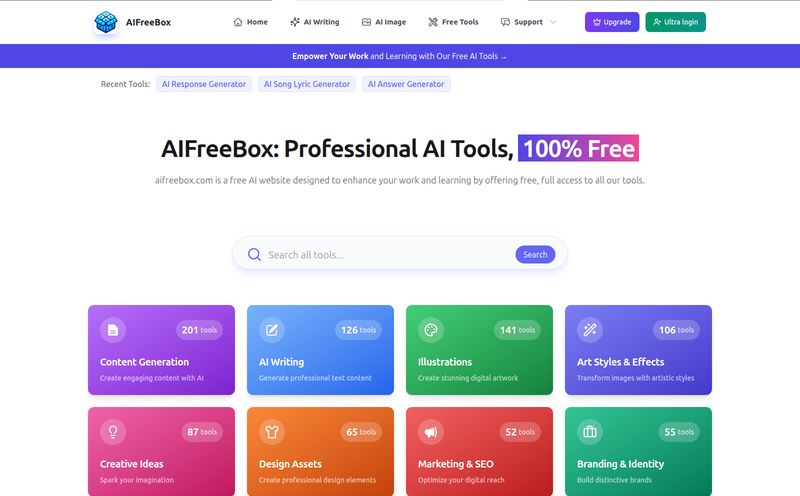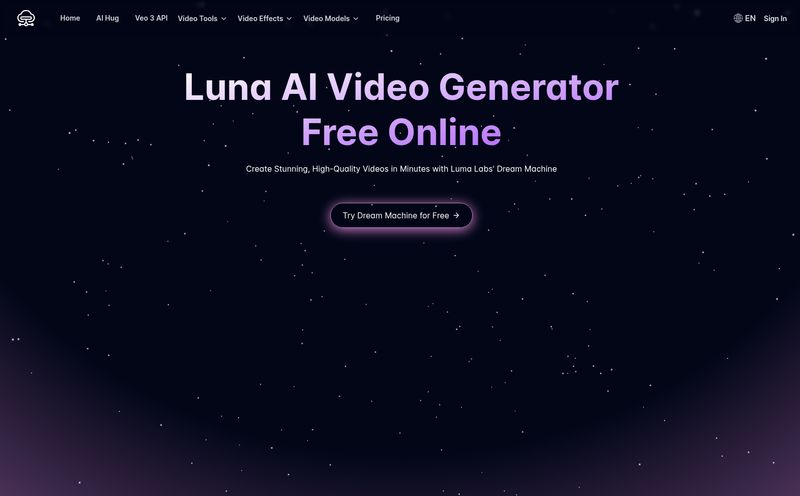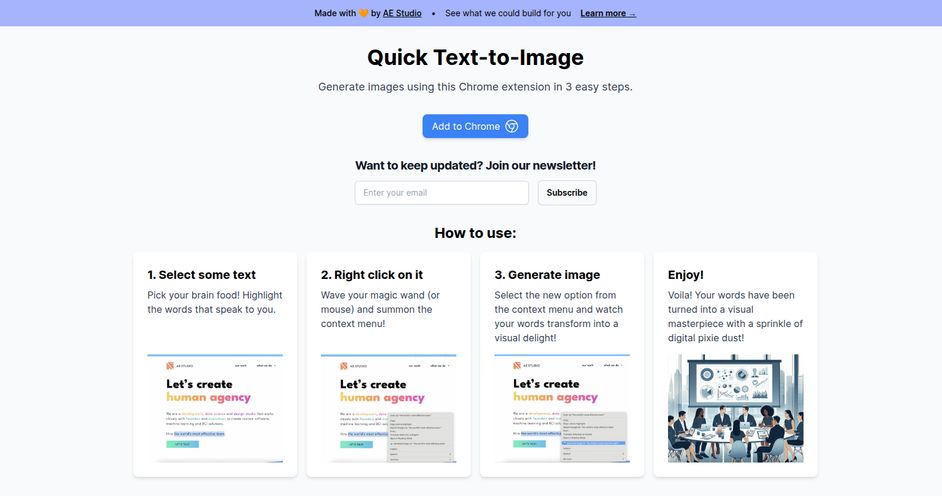If I see one more ad for a "revolutionary AI tool that will change your life," I might just throw my laptop out the window. We're drowning in a sea of AI hype, and as someone who lives and breathes digital trends, I've become pretty cynical. Most are just shiny toys that are fun for five minutes and then collect digital dust. Every now and then, though, something cuts through the noise. Something that feels less like a gimmick and more like a genuine tool. That's the vibe I'm getting after spending some quality time with SUAPP AI.
For weeks, I've been putting it through its paces, seeing if it could hold up to a real-world design and visualization workflow. I've been in this game long enough to remember the agony of overnight renders, the tedious back-and-forth of material tweaks, and the creative block that hits you like a ton of bricks. So, does SUAPP AI solve all that? Well, let's just say it's a pretty impressive attempt.
So What Exactly is SUAPP AI?
First off, SUAPP AI isn't just one thing. Think of it less like a single app and more like a Swiss Army knife for designers. It's a whole platform that plugs directly into the software a lot of us already use daily—we're talking SketchUp, Rhino, 3ds Max, Blender, and even Photoshop. That, for me, was the first big green flag. I don't want another standalone program I have to export to; I want something that works within my existing flow.
At its heart, it's a collection of AI-powered tools designed to handle the heavy lifting of rendering, concept generation, animation, and even some modeling. It’s built to speed up the boring parts so you can spend more time on the fun part: the actual designing.
The Core Features That Caught My Eye
I decided to focus on the main tools in their arsenal. Each one tackles a different, and often frustrating, part of the design process.
SUAPP AIR for AI Rendering
Anyone who's ever used a traditional renderer like V-Ray or Corona knows the pain. You set everything up, hit render, and... wait. And wait. And then you notice a reflection is wrong, so you tweak it and wait all over again. It's a creativity killer.
SUAPP AIR completely flips that script. You can take a fairly basic 3D model, feed it to the AI, and get a shockingly realistic image back in minutes. The 'Edit Mode' is particularly cool, letting you repaint or refine specific areas of an image without re-rendering the whole thing. It feels like cheating, but in a good way. It's all about rapid iteration. You can try out a dozen different lighting styles or material palettes in the time it would take to do one traditional render. My poor, overworked GPU has never been so quiet.
SUAPP AIC for Instant Concepts
We've all seen text-to-image generators like Midjourney. SUAPP AIC is like that, but with a designer's brain. It's geared towards architectural and interior spaces. This is a godsend for early-stage brainstorming. Instead of spending an hour cobbling together a mood board on Pinterest, you can just type, "A modern brutalist kitchen with dark concrete countertops and warm walnut cabinetry" and get a handful of high-quality starting points. It’s perfect for getting on the same page with a client before you’ve even modeled a single polygon.

Visit SUAPP AI
SUAPP AIA for Bringing Stills to Life
This one was a pleasant surprise. SUAPP AIA takes a static rendered image and adds subtle motion to it—think swaying trees, moving clouds, or gentle water ripples. It's not going to create a full-blown animated walkthrough, but for creating a quick, dynamic video for social media or adding a bit of pizzazz to a presentation? It's brilliant. A simple, effective way to make your work feel more alive.
SUAPP AIM for AI Modeling
Okay, this is the one I was most skeptical about. The holy grail of Text-to-3D. Can you really just describe an object and have a clean 3D model pop out? The answer right now is... sort of. SUAPP AIM can generate 3D models from text prompts or even 2D images. I found it's fantastic for creating conceptual massing models or organic shapes that would be a pain to model by hand. But it's not going to build you a perfect, construction-ready BIM model with clean topology. Not yet, anyway. You can see the ambition, and it's an exciting glimpse into the future, but it's one of the areas that still feels a bit 'in development'.
How The Pricing and "Bar-Credits" Work
Alright, let's talk about the money. SUAPP AI doesn't use a simple subscription. It operates on a credit system, which they call "bar-credits." I like to think of it like an arcade. You buy a roll of tokens (credits), and each 'game'—a render, an animation, a model generation—costs a certain number of those tokens. A simple HD render might be 10 credits, while a more complex one could be 20.
This has its pros and cons. It's great if you're an infrequent user, as you only pay for what you actually generate. But if you're a heavy experimenter, you might feel a little credit-anxious, worried about 'wasting' them on a dud. Here's a quick breakdown of their main plans:
| Plan Name | Price | Duration | Credits/Month |
|---|---|---|---|
| Basic Plan | $99 | 3 Months | 5,000 |
| Standard Plan | $199 | 3 Months | 10,000 |
| Pro Plan (Popular) | $299 | 1 Year | 20,000 |
| Max Plan | $599 | 1 Year | Unlimited |
In my opinion, the Basic plan is perfect for a freelancer or student wanting to dip their toes in. The Pro and Max plans are clearly built for studios and power users who will be churning out visuals constantly. The jump to the 'Max' plan for unlimited credits and early access to new features is tempting, I won't lie.
My Real-World Experience: The Good and The Not-So-Good
No tool is perfect. After the honeymoon phase, you start to see the little quirks. So here's my honest take.
The best thing about SUAPP is the integration. The fact that it just works inside my SketchUp window without some clunky import/export process is a massive win. And the speed of iteration is a genuine game-changer. Being able to show a client ten different material options in ten minutes is powerful. Plus, since it’s cloud-based, my computer doesn't sound like a jet engine preparing for takeoff every time I want to see a pretty picture. Major points for that.
On the flip side, there are some hurdles. That credit system can be a double-edged sword, making you hesitant to go wild with experimentation if you're on a tighter budget. And while it’s mostly intuitive, there’s still a bit of a learning curve to figuring out how to write the perfect prompt to get the AI to do what you want. It's not magic; you still need a designer's eye to guide it. Some of the more advanced features also have that 'coming soon' label, which shows the platform's ambition but can be a little frustrating if the one feature you really want isn't fully baked yet.
Who is SUAPP AI Actually For?
This is the big question. In my view, it's a fantastic tool for architects, interior designers, landscape architects, and concept artists. Basically, anyone whose job involves visualizing spaces will find something to love here. It’s an accelerator, a tool for generating ideas and high-quality presentations at lightning speed.
It's also an amazing asset for students. Being able to produce portfolio-quality renders without spending a fortune on render farm services or high-end hardware is huge.
Who is it not for? Probably not for the structural engineer who needs millimeter precision from their models. The AI modeling isn't quite there yet for that level of technical detail. But for the creative and presentation stages of a project? It's a beast.
Frequently Asked Questions about SUAPP AI
What are bar-credits and how do they work?
Think of them as tokens for an arcade. They are the currency you use inside SUAPP AI to pay for services like rendering an image or generating a 3D model. Each action has a different credit cost.
What happens if I run out of credits?
If you run out, you'll need to either upgrade your plan to one with more credits or purchase additional credit packs. Your plan renews with a fresh batch of credits each month or billing cycle.
Do I own the images I generate with SUAPP AI?
Generally, yes. Like with most AI image generators, you typically own the rights to the specific images you create and can use them commercially. It's always a good idea to check their latest Terms of Service for the specifics, though.
Is SUAPP AI difficult to learn for a beginner?
I'd say it has a mild learning curve. The interface is pretty intuitive, especially if you're already familiar with design software. The real skill is learning 'prompt craft'—how to write clear instructions to get the best results from the AI. But you can start getting cool results on day one.
Can this replace traditional renderers like V-Ray or Enscape?
For many use cases, like fast conceptualization and client presentations, absolutely. For final, pixel-perfect marketing shots where you need 100% control over every single reflection and shadow, you might still want the fine-tuned control of a traditional renderer. For now, I see it as an incredibly powerful 'and' tool, not an 'or' tool.
Does it work on both Mac and PC?
Since it's a plugin-based system for software like SketchUp and Rhino (which run on both) and also has a web version, it's generally cross-platform friendly. You'll just need to ensure the specific plugin you want is available for your OS and software version.
My Final Verdict on SUAPP AI
After all my testing and prodding, I'm genuinely impressed. SUAPP AI isn't just another drop in the AI ocean. It's a thoughtful, powerful, and well-integrated suite of tools that understands the pain points of a modern designr's workflow. It’s fast, it’s versatile, and it opens up creative possibilities that were simply too time-consuming before.
No, it's not perfect, and it won't design a building for you. But the debate about AI in design has never been about replacing designers. It’s about augmenting them. It's about giving us superpowers. And if that's the goal, then SUAPP AI feels like a pretty cool cape to add to your wardrobe. It’s earned a permanent spot in my digital toolbox.



